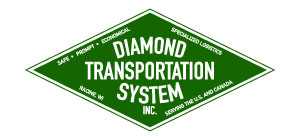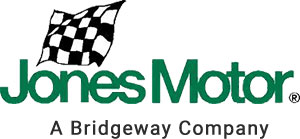Heavy Equipment Transport Costs and Logistics
Are you looking at relocating your heavy equipment to a new job site? Have you thought of the costs you are going to incur while transporting your equipment? Getting the best price for a service is everyone’s wish.
When you think of heavy equipment transport, think of all costs associated with making a safe delivery from the point where your equipment is to its destination.
Many factors are put into consideration when calculating heavy equipment transport costs. In this article, we’ll look at how hauling and trucking companies calculate shipping costs.
What Factors Determine the Cost
Many shipping companies provide calculators to determine the overall cost for equipment transport.
Here are things that contribute to these costs:
- Traveling Distance and Time
Long-distance equipment transportation may even require more than a day to reach their destination.
Costs are charged per mile covered. Companies use a fixed mile rate depending on whether it’s a long or short distance.
- Type and Size of the Equipment
Sometimes handling equipment, especially delicate ones that can break easily, needs experienced drivers. In addition, handling delicate equipment can increase the shipping costs.
The cost of the equipment can increase if your equipment is heavy and oversize. You’ll need to get a bigger truck for the job. The best would be a flatbed. Also, if you use bigger trucks, the driver might not use the same route as other trucks with smaller loads, making them expensive.
- Permits Required for the Equipment
Heavy equipment transport requires permits. The type of permits needed can determine the cost of transporting the equipment.
- Fuel Prices
Fuel prices regularly fluctuate. When fuel prices increase, it directly affects all its services, causing the shipping company to increase its price.
When fuel prices increase, the cost of materials used to make the shipment run smoothly also increases, causing a rise in heavy equipment transport costs.
At the present moment, fuel costs throughout the world are rapidly rising, and this is resulting in a large amount of volatility in the heavy equipment transport industry. Many heavy equipment transport companies are having to charge more that they normally would, because of the rising costs of fuel. If you have a working relationship with a heavy equipment transportation company, and you are noticing that the costs are increasing, it is more than likely due to this shift in fuel prices.
- Infrastructure
When a driver is carrying heavy machinery or equipment, he must be extra careful, especially on poor roads, to avoid accidents. In addition, poor roads can strain the driver, making him take longer than when he is in good road conditions.
Poor road conditions cause an increase in the cost of equipment transport since there will be an increase in fuel consumption and delays due to rough roads.
- Disruptions
Any disruptions to a company’s daily routine can lead to delayed dispatch of equipment. Things like storms, emergencies, and pandemics can disrupt the normal organization of the company’s activities.
Disruptions can increase costs of equipment delivery because of delays, adjusting shipment information, and rechecking all the documentation for dispatch.
Cost per Mile for Heavy Equipment
You can’t tell how much it costs to move heavy equipment per mile because all of the elements described above are considered when calculating the price, and different organizations use different techniques.
For long-distance hauling, the cost per mile can be less compared to that for short-distance hauling. The price per mile depends on different companies, but it starts from $2.00 to $15.00 and more depending on the size of the load and the number of axles required to transport the load.
The Logistical Needs of Transporting Heavy Equipment
Without the capacity to organize, monitor, and adapt to logistical demands, freight service provision is incomplete. That is why a respected full-service logistics company, such as Osage Specialized Transport, provides extensive capabilities for logistical planning as well as the monitoring you need through transportation management systems (TMS). Logistical operations include:
- Packaging to ensure equipment safety
- Containerization to protect the equipment and reduce freight costs
- Tracking equipment for real-time information on the equipment’s location from pickup to drop off.
- Planning on how equipment is received, stored, and dispatched
Permits and Lead cars
There are rules and regulations set for carrying heavy and oversized loads. There are also limits on the height, width, and weight.
Different states can have different rules regarding heavy equipment transport. Therefore, companies dealing with heavy and oversize loads must apply for various permits that will enable them to transport heavy equipment, breaking no set rules and guidelines.
Lead cars/escort cars are a part of the heavy haul transportation, which is used to warn other road users of the heavy or wide load that can cause danger, and they should proceed with caution.
Load cars have noticeable flashing lights, flags, and a big sign showing that a heavy load is behind.
Secure Transportation
The main reason for choosing transportation providers is security. To accomplish this, you should:
- Know the type of freights available, such as heavy, wide load, flatbed
- Know how you’re going to transport it. This includes things like packaging and dimensions.
- Are there special handling requirements, such as delivery time, or handle with care precautions?
- Check you have all the documents, such as permits and dispatch documents.
Choose a heavy transport equipment company with an excellent reputation and exceptional customer support to deliver your heavy equipment safely and right on time while complying with all DOT regulations. Knowing your equipment is with the best hauling company gives you peace of mind. Click to learn more about our services.















